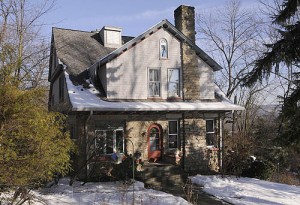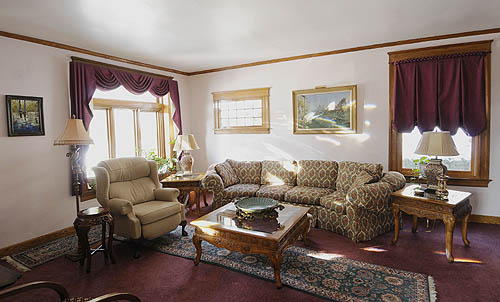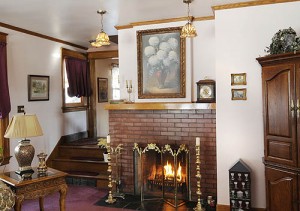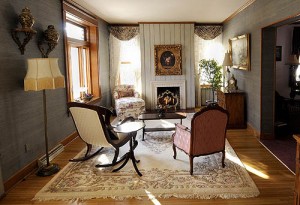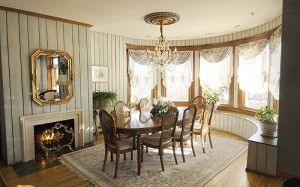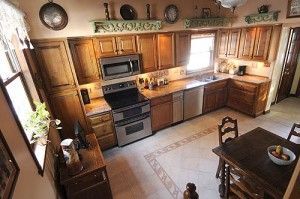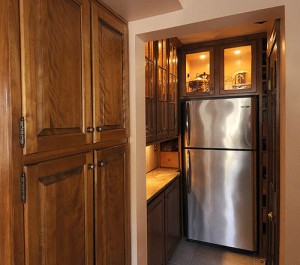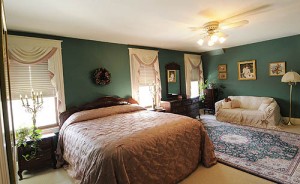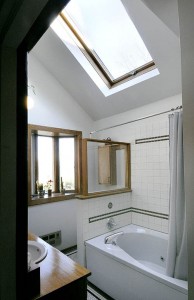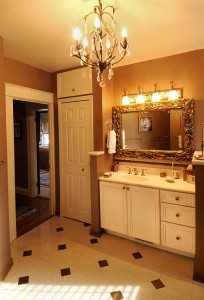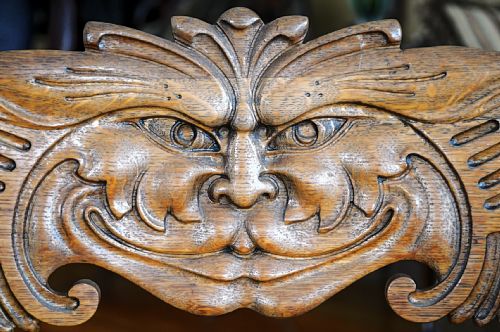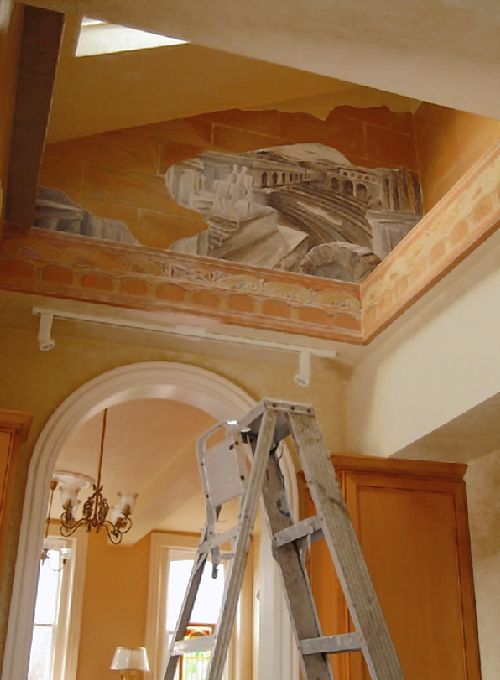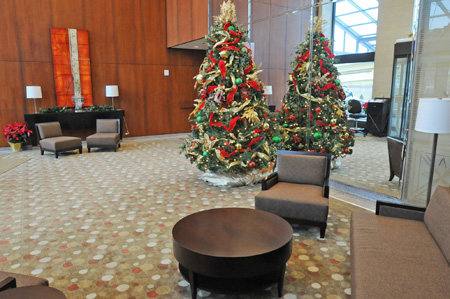
Category Archive: News Wire Services
-
Kentuck Knob Winter Gardens Subject of Talk
Saturday, January 22, 2011Phyllis Gricus will give a talk on the winter gardens at Kentuck Knob as part of the Green Tree Garden Club’s meeting on Feb. 10. The meeting will begin at 11 a.m. and the program on the ground of the Fayette County house designed by Frank Lloyd Wright at 12:30 p.m. Guests are welcome. For more information, call Helen Scott at 724-622-8325.
-
Buying Here: Thornburg
Saturday, January 22, 2011By Gretchen McKay, Pittsburgh Post-GazetteBidding wars are not common in Pittsburgh. Every once in a while, though, multiple buyers will set their collective hearts on a house in a much-desired neighborhood. Linda Padget and her husband, John Miller, had to outbid eight others to buy the nearly century-old Craftsman-style house at 508 Yale Road in Thornburg that is currently for sale by owner for $389,900 (www.oldhouses.com, No. 5121).
The couple adored the big Victorian they’d spend years restoring in nearby Crafton, but not its location at a noisy intersection.
“We wanted peace and quiet,” recalls Ms. Padget, who paid $243,500 for the house in 1999. “This was out of the way, with virtually no traffic.”
Laid out in 1899 by two cousins who subdivided 250 acres of family farmland, Thornburg has curving, shaded streets named after Ivy League colleges and many large, Craftsman-style homes that appealed to turn-of-the-century Edwardian sensibilities. The Thornburg Land Co. advertised the new development in the Chartiers Valley Mirror as a “high-class residence district.” The borough, most likely modeled after New York’s blue-blood Tuxedo Park, also had one of the first private golf courses in Allegheny County (members cut the grass on Saturdays and played on Sundays) along with a community club and a community theater founded in 1937.
Just 10 minutes from Downtown, Thornburg has remained a family-centered town with a lively community spirit: Both the Thornburg Community Club and Village Players are still active; the golf course, which fell into private hands for a time, is now a conservation area with walking trails for residents.
A few of Thornburg’s homes are true mansions, including the Frank Thornburg House built in 1907 on Lehigh Road, which has 7,000 square feet of living space, seven bedrooms and 10 fireplaces. The Miller-Padget house, built in 1904, is more modest, with five bedrooms, three working fireplaces with original tile hearths and just under 4,000 square feet of space.
Located on a professionally landscaped lot in the historic district, the 21/2-story house is believed to be one of the borough’s original dozen or so houses. Its exterior is constructed of fieldstone and cedar shakes; there’s also a driveway leading to a two-car detached garage. While it has been updated with cosmetic changes, none of its six or seven owners over the past 100 years made the mistake of significantly modernizing its rooms or exterior.
“Everyone took very good care of it,” says Ms. Padget. “They kept the integrity intact.”
Original hardwood floors, brass hardware and leaded-glass transoms are among the period details that dress up the first floor, which includes a 15-by-19-foot family room. There’s also a 20-foot oak bay with a cushioned window seat in the 13-by-19-foot dining room, parts of which are wallpapered with pale blue silk grass cloth.
An adjoining 12-by-15-foot living room has mahogany paneling, with windows overlooking the side yard. At first, the couple wasn’t too keen on the light blue tint of the stain on the paneling (probably not original). But they feared the room would be too dark if they stripped it and stained it dark mahogany. The color ended up growing on them.
The recently updated eat-in kitchen features stainless-steel appliances, cherry cabinets and granite countertops; they also turned a closet into a butler’s pantry with glass-fronted cabinets, fridge and a wine rack. Accent tiles in the backsplash depict Italian scenes; the copper ceiling is faux.
The second floor holds a 14-by-29-foot master bedroom with a pair of walk-in closets and a window seat. The master bath, brightened by a skylight, has a whirlpool tub. The smaller of two additional bedrooms serves as a home office, and there’s also a newly remodeled main bath with a porcelain floor.
The attic has two more bedrooms — one with a wood floor and the other carpeted — and a 10-by-16-foot “bonus” room that’s currently used for storage.
The finished basement has a game room/den with wall-to-wall carpeting, a 9-by-14-foot cedar closet and a store room/shop with built-in shelving. A vintage quartersawn-oak Banta icebox is used by the current owners as a bar. Since it’s too massive to move, it comes with the house.
The fenced-in backyard is surrounded by mature trees that cloak the house in privacy in spring and summer. Year-round, there’s a fabulous view from the 14-by-33-foot deck off the kitchen, outfitted with a built-in gas grill, below-railing lighting and stereo with quadraphonic sound.
“At night, you can see the sparkling lights of Sheraden and Ingram,” says Ms. Padget, It is, she says, their favorite spot in the house. “We spend seven months of the year out here.”
No properties have changed hands on Yale Road in the past several years, but homes have sold on other streets in the neighborhood with prices ranging from $160,000 on Cornell Avenue to $347,5000 on Harvard.
To request a brochure on 508 Yale Road, call 412-921-0508 or e-mail padgetmiller@verizon.net.
-
Children’s Museum Has Bulk of Funds to Build Park
Friday, January 21, 2011By Diana Nelson Jones, Pittsburgh Post-GazetteThe Children’s Museum is $2.2 million away from raising the funds it needs to transform the sunken concrete square outside its doors into the Allegheny Public Square Park and make upgrades inside the museum.
Officials Thursday announced they had raised $6.3 million of the $8.5 million needed and that the remainder would be solicited as public donations.
The bulk of the money to date has come from foundations. A $250,000 challenge grant from the Buhl Foundation will match $1 for every $2 contributed by the public.
The existing square was created in the 1960s as part of the Allegheny Center Mall. A sunken area housed a fountain encircled by amphitheater-like seating. The area now is a walk-through zone, sometimes used by skateboarders but otherwise ghostly.
The museum chose San Francisco landscape architect Andrea Cochran in a design competition in 2007, when it embarked on its capital campaign. Ms. Cochran’s design for the new park calls for native plants, a meadow, 75 additional trees, solar lighting, a rain garden and a V-shaped walkway with benches and movable seats and tables.
The park’s art feature will be a stainless steel sculpture by Ned Kahn. Called “Cloud Arbor,” the piece will stand as rows of stainless steel tubes with nozzles to create “a sphere of mist,” said museum executive director Jane Werner. “It is a companion to our wind sculpture,” called “Articulated Cloud,” which Mr. Kahn also designed as 43 panels on the building that create the illusion that the building is moving with the wind.
A north-to-south row of cypress trees along Children’s Way will be kept while about 10 others will be replaced, said Ms. Cochran, adding that arborists had determined them to be unhealthy.
Plants have been chosen for their contributions to green design, she said. “We are teaching by example, with plants that don’t need pesticides or fertilizers.”
“Everything we all say we care about — the environment, green space and kids — all comes together here,” said state Sen. John Pippy, R-Moon, a museum board member.
The project’s budget will also cover alterations of the museum’s nursery, store and cafe.
“We are hoping to break ground sometime this year,” said Ms. Werner. The project may be completed next year.
-
The Making of a Mural: Series of Coincidences Led to Collaboration Between Artist and North Side Homeowner
Saturday, January 15, 2011
By Kevin Kirkland, Pittsburgh Post-Gazette
Artist Ken Heusey in front of the mural he created for David McAnallen's renovated kitchen on the North Side. Pam Panchak / Post-Gazette
Life is sometimes like a movie script. Or maybe it just seems that way to Ken Heusey because he worked in Hollywood for 16 years.
Only in a movie would absentmindedly leaving your cell phone on a table in an airport restaurant lead to painting murals in a South Side restaurant and a restored North Side townhouse. The work has been a triumph and a treat for Mr. Heusey, an accomplished photographer and native of Fombell, Beaver County, who did fashion shoots and lighting on movie sets, including making Matt Damon look good in “Oceans 12.”
David McAnallen, who is finishing a nine-year renovation of an 1860s brick townhouse in the North Side’s Manchester neighborhood, is glad fate brought them together. No one else could have imagined and created the classical mural that draws your eyes up the moment you step into his kitchen.
“The collaboration with Ken was wonderful. As you walk around, you’re captivated. It sucks you in,” said Mr. McAnallen, a psychologist.
Mr. Heusey, 46, was heading back to Los Angeles a year-and-a-half ago when he stopped to eat at the T.G.I. Friday’s at the Pittsburgh International Airport and left his cell phone. Upon his return, he stopped in and asked to see the manager who was holding it for him. The server he spoke with recognized him — She was his 10th-grade date for the homecoming dance at Riverside High School.
That connection led to an introduction to the owners of Hofbrauhaus Pittsburgh on the South Side. Last fall, Mr. Heusey painted a large two-section mural of 19th-century barmaids and beer drinkers on the terrace overlooking the beer garden. He was finishing that project when he met Mr. McAnallen while the two men were working out at the North Side YMCA. When Mr. McAnallen saw his photos of the Hofbrauhaus project, he decided he’d found the artist to decorate his newly renovated kitchen.
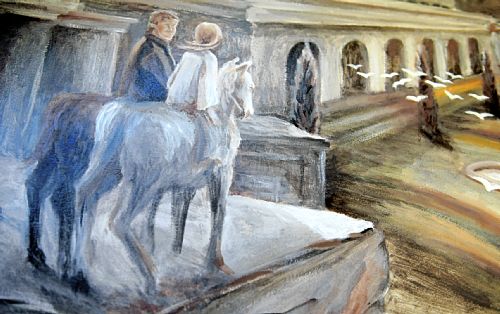
A detail from the mural Ken Heusey painted for David McAnallen's renovated kitchen. Pam Panchak / Post-Gazette
“I had thought about a mural before, but it never happened,” he recalled. “The space is so angular. I wanted to soften the angles.”
The space is an alcove around a new Velux skylight Mr. McAnallen added to the kitchen. Although Mr. Heusey had in mind a prominent spot visible from the doorway, it ended up closer to the ceiling, revealing itself gradually as a visitor enters the kitchen. The homeowner wanted something subtle.
“It was too big, too bold there,” Mr. Heusey agreed.
The artist suggested a trompe l’oeil painting in which old sandstone walls and a fragment of an old mural peek out from beneath layers of plaster. His inspiration for the classical scene came from a Gustave Dore engraving, “Isaiah’s Vision of the Destruction of Babylon.” He liked the mood of the drawing, especially the stormy sky. Mr. McAnallen liked it, too, but he asked the artist to take out the debris. He also added a pond similar to the one the homeowner had installed in his side yard. Isaiah was replaced with one horseman, then two.
“I like to create a story,” Mr. Heusey said, adding that he leaves the story’s details to the viewers’ imagination.
He copied the pattern of the faux stone corbeling beneath the scene from a nearby building and the carved lion’s face from an oak chair that is a McAnallen family heirloom.
Mr. Heusey spent about three weeks working on the painting, interrupted by the holidays. Before he started, he warned Mr. McAnallen that he would probably have concerns in the middle of the project, when he was still roughing in the design. He was right:
“I panicked only one time,” Mr. McAnallen admitted. “A lot of orange was coming through. I thought ‘Did I do the right thing?'”

David McAnallen at his home on Sheffield Street in Manchester on the North Side. Pam Panchak / Post-Gazette
The artist explained that the orange was underpainting and that it would not look that way in the final painting. And it doesn’t.
The two men declined to say what the project cost. Mr. Heusey, who spends about half of his time painting murals and the other half doing commercial photography, said his price depends upon the size, detail and complexity of the project. He says collaboration between artist and client yields a painting that pleases both.
“We let it evolve,” he said. “By going back and forth, we created something better.”
To contact Ken Heusey, call 310-963-6772 or go to www.khprod.com, which includes photos taken as he worked on the McAnallen project.
-
Denis Theatre Foundation Names Executive Director
Thursday, January 13, 2011
Pittsburgh Post-GazetteThe Denis Theatre Foundation on Wednesday named Valerie Golik, the former executive director of The Pittsburgh Philharmonic, as its new executive director.
She replaces board member Jennifer Smokelin, who has served as interim director since the fall.
“We are delighted that Valerie is joining the Denis Theatre Foundation,” Ms. Smokelin said in a news release. “She brings with her an excellent background in arts management, programming, and a strong track record in fundraising and planning.”
When Ms. Golik, of Marshall, assumes the role Jan. 17, she will direct the foundation’s goal of restoring and re-opening the Denis Theatre on Washington Road in Mt. Lebanon. The theater, which opened in 1938, closed in 2004 in a state of disrepair. The nonprofit Denis Theatre Foundation formed in 2007 and began a fundraising campaign, with the goal of purchasing the building and restoring it as an independent film theater and community cultural center.
In September, the foundation announced it had raised enough money to purchase the building. Ms. Golik will assist with the capital campaign to raise $2.5 million to open the first of three planned screens. So far, the foundation has raised $900,000.
The foundation hopes to open the first screen in mid-2012.
“We are counting on broad support from individuals, businesses and charitable foundations from throughout the Pittsburgh area,” Ms. Golik said. “Once re-opened, the Denis will be a true regional asset.”
-
‘Location’ is Only Part of Marketing Downtown Homes
By Bob Karlovits, PITTSBURGH TRIBUNE-REVIEW
Sunday, January 9, 2011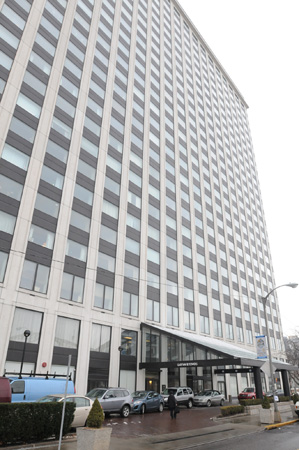
The condos at Gateway Towers, Downtown, offers postcard-like views of PNC Park, Point State Park and the headwaters of the Ohio River. Joe Appel | Tribune-Review
Cindy Clifton stands at the corner of a condo in Gateway Towers overlooking postcard-like views of PNC Park, Point State Park and the headwaters of the Ohio River.
What sells this $1 million condo, like others that can be about $200,000 in the Downtown high-rise, is what has become a mantra of real estate sales, the building manager explains: “Location, location, location.”
But at the same time, she adds, the management of the building also recently spent about $80,000 to bring the lobby, hallways and other public spaces out of the 1950s. It is an attempt to make the building “hipper” and to compete with some other, newer residences.
The need to make a lobby more attractive, to have it “say” something, points to a twist in the marketing of Downtown’s places to live. The vertical lifestyle Downtown creates a different market than the lawns and properties of the suburbs. For many, that upkeep is the reason for leaving the suburbs.
Liz Caplan, real estate broker for Remax, says there is one requirement that is shared in all Downtown homes.
“People want a worry-free lifestyle,” she says. “They don’t want to worry about the garden or cutting grass. They want to be able to take off for a couple weeks in Florida without thinking about anything.”
Debbie Roberts, general manager of the Cork Factory apartments in the Strip District, says urban living is “not for everyone” and those who accept it also are lured by the features their building offers.
Frank Berceli, from the firm that handles leasing for the Heinz Lofts on the North Side, says those amenities are even more important than higher or lower rents or mortgages.
“If your dealing with a person who can afford $1,300 for rent, $50 more or less won’t matter,” he says. “But a good workout room will.”
Roberts says the Cork Factory thrives on amenities such as the picnic area, a marina and the building’s historic architecture
But, she adds, its closeness to Downtown also makes it attractive even if it is not right in the business district.
Similar comments are made at many Downtown residences, pointing to sales pitches that are far different from those for single-family homes.
Those pitches also point to how these buildings would seem to present different lifestyles, even if they seem similar.
It is all in what is offered
Both David Bishoff and Frank Berceli are big on privacy — but even that can take on a different nature.
Bishoff is president E.V. Bishoff Co., the Columbus, Ohio, firm that developed the Carlyle condos at Fourth Avenue and Wood Street. Berceli is general manager of Amore Management of Monroeville, which leases homes at the Heinz Lofts.
They both say they market their residences as offering a form of “privacy,” but Bishoff brags about how his “privacy” is amid bustle. Berceli’s, meanwhile, is in a suburb in the city.
Bishoff says one of the strongest aspects of the Carlyle is the 14 to 18 inches of concrete above and below condos and the walls that are lined with sound-deadening material. That makes the silence in the condos similar to that which residents experienced in their suburban homes before they moved Downtown.
“We don’t want to listen to our neighbor’s stereo,” he says of life in the condos, many of which cost about $300,000. “We did that in college, but we don’t want to do it now.”
Still, though, he adds, the Carlyle is in the middle of town, blocks from restaurants, shows, shops and health clubs. That gives it a location in the middle of activity that has lured many of its residents.
Berceli, on the other hand, says his clients tend to want to get away from urban life, but remain close enough to dip into it at a whim.
For that same reason, Berceli continues, the Heinz Lofts provide a better workout facility: it allows residents to stay at home instead of going to a commercial gym, no matter how close.
By living on the other side of the Allegheny River, the noise of traffic and business activity is gone. But the Downtown life is minutes away when it is wanted.
He says Heinz Lofts tenants are lured by that quiet as well as such features as the bicycle-hiking trail in front of it.
The ‘product’ is everything
William Gatti, president of Trek Development, which owns the Century Building on Seventh Avenue, Downtown, says the total “product” is the most important element in the marketing of a Downtown home.
Apartments there range from $600 a month rent-control units up to $1,500, and are being taken mostly by people who work Downtown or, in some cases, are retired but active as docents or other volunteer jobs.
“It puts people on the street,” he says. “They are out there going to work or going to restaurants. It is part of the whole urban lifestyle.”
He knows of some people who use Downtown residences as a part-time city home and suggests that strategy does not create a lively Downtown.
Brett Malky, a partner in 151 First Side, the upper-end condos on Fort Pitt Boulevard, says ultimately the “success” of all the Downtown residences is one of the best ways of marketing Downtown living.
“It is a lifestyle choice, but the fact that there are places appealing to young workers or empty nesters makes it possible to market Downtown living,” he says.
As he spoke, he was closing in on agreements that would leave only nine units available in the 82-place site that opened in 2007.
For condos that can top $1 million, that bespeaks the success he sees.
“With the small number left, it shows the fear of living Downtown is over,” he says.
-
Friendship May Get Aldi Grocery
Tuesday, January 11, 2011By Mark Belko, Pittsburgh Post-GazetteDiscount grocer Aldi appears to be headed to the East End as part of the redevelopment of a former car dealership.
Michigan-based Warner Pacific Properties is expected to brief the city planning commission today about its plans to convert the Day Automotive dealership into a grocery, offices and other retail uses.
The grocer in question is believed to be Aldi, although Leslie Peters, an attorney for Warner Pacific, said the developer did not yet have an agreement with any particular store.
Asked if Warner Pacific were talking to Aldi, Ms. Peters replied, “I think you can infer that.” City Councilman William Peduto, who represents the area, said Warner Pacific had stated that Aldi would be the grocer.
The developer is proposing an 18,000-square-foot grocery at the site at Baum Boulevard and Roup Street in Friendship. It is also planning 44,000 square feet of office space and 3,000 square feet of retail space.
Ms. Peters said Warner Pacific planned to keep the exterior intact.
The building, with a corner tower that once displayed pulsating light after dark, has some historic value. Built in the early 1930s as a Chrysler sales and service building, it remained as an auto dealership until it was closed in 2009 by the Day Automotive Group.
“We’ll be reusing the existing building,” Ms. Peters said. “We believe it’s a significant structure, at least for Pittsburghers. Everybody knows the building.”
She added that the developer did plan some interior renovations to upgrade the space. The total project cost is estimated at $4 million.
Because the property is a former auto dealership, Mr. Peduto said there are ramps within it that will allow for parking on the upper floors. The grocery will be on the first floor. He said an adjacent structure would be converted for office use.
Mr. Peduto said the project has the support of the Baum-Centre Initiative group. Through a community process, the developer is also addressing concerns about traffic patterns and other issues, he said.
After a planning commission briefing today, Warner Pacific is expected to appear before the city’s Zoning Board of Adjustment Thursday to request a special exception that would allow the property to be used for a grocery and office space.
Ms. Peters said the developer hoped to get all permits needed for the project by February or March and then start construction.
-
Buying Here: Oakmont
A fine arts-and-craft home for a young family
Sunday, January 09, 2011By Gretchen McKay, Pittsburgh Post-Gazette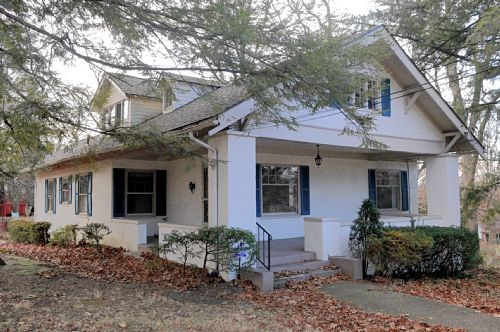
This home on California Avenue in Oakmont is on the market for $249,900. Bob Donaldson / Post-Gazette
Oakmont is probably best known for its luxurious country club, home to a famously difficult golf course that’s hosted more combined USGA and PGA championships than any other course in America. But its roots actually were planted in industry; early employers along the Allegheny River included Allegheny Valley Railroad, Woodings-Verona Tool Works and Agnew & Co., one of the most prolific glass companies in Pittsburgh at the turn of the 20th century.
Along with the elegant (and uber-expensive) homes that sprang up on Hulton Road about the same time as the club, the borough is blessed with a variety of more modest turn-of-the-century homes. Pretty as a picture is a 11/2-story Craftsman bungalow at 710 California Ave. (MLS No. 842126), constructed 11 years after Oakmont incorporated as a borough in 1889. It is being offered by Howard Hanna Real Estate’s Shadyside office for $249,900 (www.howardhanna.com; 412-361-4000).
The Arts and Crafts Movement flourished in England in the mid 1800s. Yet the style — marked by architectural simplicity and natural materials — didn’t catch on in the U.S. until decades later, in the early 1900s. After the fussy opulence of the Victorian era, American homeowners welcomed uncomplicated designs that were easy to envision, build and maintain. Architect/furniture designer Gustav Stickley’s “The Craftsman” magazine, first published in 1901, proved so popular that the 200-plus house plans he designed for its pages eventually were published in two books.
Situated on a double corner lot within easy walking distance of the shops and restaurants on Allegheny River Boulevard, this house features the style’s characteristic low-pitched, gabled roof and covered front porch. Inside, the rooms are large, with minimal ornamentation, high ceilings and lots of windows. Some could some updating.
First-floor bedrooms might seem like a Baby Boomer invention, but they actually were fairly common in Craftsman bungalows. This 2,500-square-foot house has two on the main level, including a 13-by-13-foot master, plus two more upstairs. Something else that will appeal to modern sensibilities: There’s a full bath on both floors.
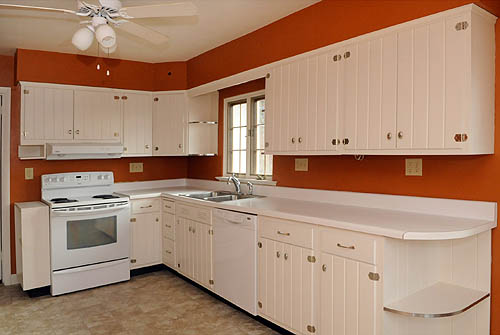
The 15-by-10-foot eat-in kitchen opens onto a 15-by-14-foot formal dining room. Bob Donaldson/Post-Gazette
The updated, eat-in kitchen measures 15 by 10 feet and is brightened by white wood cabinets and white appliances. It opens onto a 15-by-14-foot formal dining room, which adjoins a 20-by-14-foot living room with built-in bookcases and a working fireplace. Hardwood floors run throughout the first floor; out back is a one-car detached garage.
The large yard and quiet, tree-lined street make it a perfect starter house for a young family, says listing agent Justin Cummings. With most of the living space on the first level, it also should appeal to older couples who are downsizing but still need bedrooms for grandchildren and other visitors.
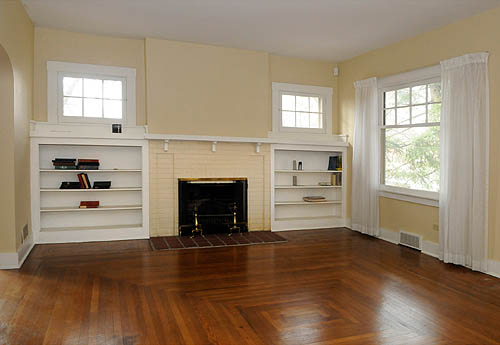
The 20-by-14-foot living room features built-in bookcases and a working fireplace. Hardwood floors run throughout the first floor. Bob Donaldson/Post-Gazette
The current owner paid $265,000 for the house in 2007. It has a 2010 full market value of $175,000
(www2.county.allegheny.pa.us).
In the past three years, eight homes have changed hands on California Avenue, ranging in price from $167,500 in May 2007 to $285,000 in July 2008 (www.realstats.net).
There will be an open house from 1 to 4 p.m. today. For more information, contact Justin Cummings of Howard Hanna’s Shadyside office at 412-361-4000 or www.howardhanna.com.

